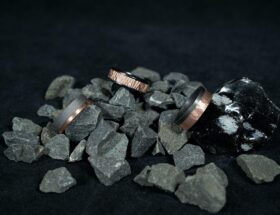Shellac nails are a type of manicure that involves the application of a special type of nail polish called shellac.
This polish is a hybrid between traditional nail polish and gel polish and is known for its durability and high-shine finish.
Shellac is applied in a similar way to regular nail polish and is cured under a UV light.
This curing process helps the polish to set and become hard and durable, providing a long-lasting, chip-resistant finish.
Unlike traditional nail polish, shellac can last up to two weeks without chipping or peeling, making it a popular choice for those looking for a low-maintenance manicure.
One of the benefits of shellac is that it is easy to remove and does not damage the nails.
The polish can be removed with acetone, unlike gel polish which often requires filing to remove.
This makes shellac a great option for those who are concerned about the health of their nails.
Comparing Shellac and Gel Nails: Which is the Best Option for Your Manicure?
In terms of appearance, shellac nails have a high-shine finish that resembles a gel manicure.
The polish is available in a wide range of colors and can be used to create various nail art designs.
Shellac and gel nails are both popular options for a long-lasting manicure, but there are some differences between the two.
- Application: Shellac is applied like traditional nail polish and is cured under a UV light. Gel nails, on the other hand, are applied in a thicker layer and cured under a UV lamp.
- Durability: Both shellac and gel nails are known for their durability, but gel nails tend to last longer, up to three weeks. Shellac lasts for about two weeks.
- Removal: Shellac can be easily removed with acetone, while gel nails often require filing to remove and can be damaging to the natural nail.
- Finish: Both shellac and gel nails have a high-shine finish, but the shine on gel nails tends to be more pronounced and glossy.
- Cost: Shellac nails tend to be less expensive than gel nails, as the process is faster and requires fewer steps.
- Flexibility: Shellac is more flexible and less prone to chipping than gel nails, making it a good choice for people with active lifestyles.
Applying Shellac to Nails: A Step-by-Step Guide
The process of applying shellac to the nails typically involves the following steps:
Preparation: The nails are first cleaned and trimmed, and any excess cuticles are pushed back. This helps to create a smooth surface for the polish to adhere to.
Base coat: A thin layer of shellac base coat is applied to the nails. The base coat helps to protect the nails and provides a surface for the color coat to adhere to.
Color coat: A thin layer of shellac color is applied to the nails. Depending on the desired look, multiple thin layers of color may be applied to achieve the desired opacity.
UV curing: Each layer of polish is cured under a UV light for a set amount of time. This helps the polish to set and harden, creating a durable finish.
Top coat: A final layer of shellac top coat is applied to the nails. The top coat helps to protect the color coat and provides a high-shine finish.
UV curing: The final layer of polish is cured under a UV light for a set amount of time.
Clean up: Any excess polish that has been applied outside of the nails is wiped away, and the nails are moisturized to keep them healthy and hydrated.
It’s important to note that a professional manicurist should be consulted for the best results and to ensure proper application and removal of shellac nails.
The Timeframe for Applying Shellac Nail Polish
The time it takes to apply shellac polish to the nails varies, but on average, it takes about 45 minutes to an hour.
The process involves several steps, including cleaning and preparing the nails, applying the base coat, color coat, and top coat, and curing each layer under a UV light.
The length of time it takes to cure each layer will depend on the specific type of shellac being used, but it typically takes about 2-3 minutes per layer.
Additionally, the time it takes to apply shellac will also depend on the skill level of the person applying the polish.
An experienced manicurist will likely be able to complete the process in a shorter amount of time than someone who is new to the process.
It’s important to note that the total time it takes to apply shellac includes time for preparation and cleanup, so the actual time spent applying the polish to the nails is likely to be shorter.
Regardless of the time involved, it’s important to take the necessary time to ensure that the polish is applied properly and evenly, as this will help to ensure a long-lasting and beautiful finish.
The Durability of Shellac Nail Polish: How Long Does it Last?
Shellac nail polish is known for its durability and long-lasting finish. On average, shellac polish can last up to two weeks without chipping or peeling.
However, the actual longevity of a shellac manicure can vary depending on several factors, including:
Nail growth: As your nails grow, the polish may start to chip or peel. This is especially true for those with long nails.
Lifestyle: The wear and tear of daily activities can affect the longevity of the polish.
Those who engage in manual labor or use their hands frequently may find that their polish chips or peels faster.
Maintenance: Proper maintenance and touch-ups can help extend the life of the polish.
Keeping your hands moisturized and avoiding activities that may damage the nails can help prevent chipping and peeling.
Application: The quality of the application can also affect the longevity of the polish.
Applying too many layers or not curing the polish under a UV light for the recommended amount of time can cause the polish to chip or peel faster.
Overall, shellac nail polish is a great option for those looking for a long-lasting, low-maintenance manicure. With proper care and maintenance, it can last up to two weeks or longer.
The Effect of Shellac on Natural Nails: Is it Harmful?
Shellac is a popular choice for those looking for a long-lasting manicure, but some people are concerned about the effect it may have on their natural nails.
In general, shellac is considered safe for natural nails. Unlike traditional gel polish, shellac does not require filing to remove, which helps to reduce the risk of damaging the nails.
Additionally, shellac is formulated with a blend of ingredients that help to maintain the health of the nails and prevent damage.
However, as with any cosmetic product, it is possible for shellac to cause irritation or damage to the nails if not applied or removed properly.
Over-exposure to UV light during the curing process or excessive soaking in acetone during removal can both cause damage to the nails.
In order to minimize the risk of damage, it’s important to follow the instructions provided by the manufacturer when applying and removing shellac.
This may include avoiding over-exposure to UV light or limiting the amount of time that the nails are soaked in acetone.
It’s also important to maintain the health of your nails by keeping them moisturized and avoiding harsh chemicals and excessive soaking.
If you experience any discomfort or notice any signs of damage to your nails after applying shellac, it’s best to seek advice from a dermatologist or a professional manicurist.
Removing Shellac Nail Polish: The Process Explained
Removing shellac nail polish can be done at home or by a professional manicurist.
The process involves the use of acetone, which dissolves the shellac, allowing it to be easily removed from the nails.
Here is a step-by-step guide on how to remove shellac polish:
- Gather supplies: You will need acetone, cotton balls or pads, aluminum foil, and a cuticle pusher.
- Soak cotton in acetone: Soak the cotton balls or pads in acetone and squeeze out any excess liquid.
- Wrap nails: Place the soaked cotton balls or pads on each nail and wrap each finger with a small piece of aluminum foil. This helps to keep the acetone in place and helps to speed up the removal process.
- Wait: Let the nails soak for 10 to 15 minutes, or until the shellac has become soft and can be easily removed.
- Remove foil and cotton: Carefully remove the foil and cotton from each finger.
- Scrape off shellac: Use a cuticle pusher to gently scrape off the shellac. If the shellac is still not coming off easily, you can put the cotton and foil back on and wait a few more minutes.
- Clean up: Once all the shellac has been removed, wash your hands with soap and water to remove any acetone residue. Moisturize your nails and cuticles to keep them healthy and hydrated.
It’s important to follow the steps carefully and to be gentle when removing the shellac to avoid damaging your nails.
If you are unsure about the process or have any concerns, it’s best to consult a professional manicurist.
In conclusion, shellac nails are a popular choice for those looking for a low-maintenance, long-lasting manicure with a high-shine finish.
The polish is easy to remove and does not damage the nails, making it a great option for those who are concerned about the health of their nails.










